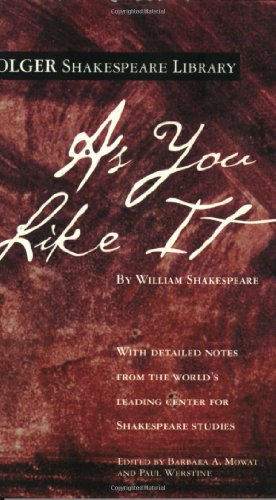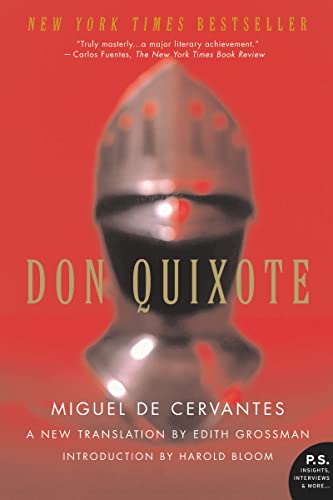1.
“All that he doth write / Is pure his own.” So a 17th-century poet praised William Shakespeare. This is not actually true.

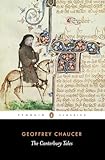
 Shakespeare was a reteller. Cardenio, also known as The Double Falsehood, which I’ve written about before for The Millions, was a retelling of the Cardenio episode in Don Quixote. As You Like It retold Thomas Lodge’s romance Rosalynde, The Two Noble Kinsmen comes from the Knight’s Tale in Chaucer’s Canterbury Tales and Troilus and Cressida from Chaucer’s Troilus and Criseyde. The Comedy of Errors is Plautus’s Menaechmi with an extra set of twins. The Winter’s Tale retold Robert Greene’s novella Pandosto without the incest. Much Ado About Nothing is Orlando Furioso, although Beatrice and Benedick are original. King Lear, Hamlet, and The Taming of the Shrew may be simple rewrites of earlier plays. In fact the only of Shakespeare’s plays to have original plots were The Tempest, A Midsummer Night’s Dream, Love’s Labour’s Lost, and The Merry Wives of Windsor. What makes Shakespeare, well — Shakespeare, is not his plots, but his language.
Shakespeare was a reteller. Cardenio, also known as The Double Falsehood, which I’ve written about before for The Millions, was a retelling of the Cardenio episode in Don Quixote. As You Like It retold Thomas Lodge’s romance Rosalynde, The Two Noble Kinsmen comes from the Knight’s Tale in Chaucer’s Canterbury Tales and Troilus and Cressida from Chaucer’s Troilus and Criseyde. The Comedy of Errors is Plautus’s Menaechmi with an extra set of twins. The Winter’s Tale retold Robert Greene’s novella Pandosto without the incest. Much Ado About Nothing is Orlando Furioso, although Beatrice and Benedick are original. King Lear, Hamlet, and The Taming of the Shrew may be simple rewrites of earlier plays. In fact the only of Shakespeare’s plays to have original plots were The Tempest, A Midsummer Night’s Dream, Love’s Labour’s Lost, and The Merry Wives of Windsor. What makes Shakespeare, well — Shakespeare, is not his plots, but his language.


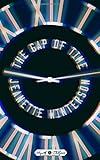 This month, Hogarth Press published the first entry — The Gap of Time by Jeanette Winterson — in a new collection of novels by today’s major practitioners that each rewrite one of Shakespeare’s plays. Tracy Chevalier will be retelling Othello; Margaret Atwood The Tempest; Gillian Flynn Hamlet; Edward St. Aubyn King Lear; Anne Tyler The Taming of the Shrew; Jo Nesbø Macbeth; and Howard Jacobson The Merchant of Venice. This is not a new endeavor, although it does seem to be a uniquely 20th- and 21st-century phenomenon. (The Romantics preferred to think of Shakespeare as an artless genius working under pure inspiration.) But as scholars have begun to recognize the extent of Shakespeare’s own retellings — and collaborations — modern writers have taken a page out of his book by rewriting his plays. (I’ll mention here the newly announced project by the Oregon Shakespeare Festival to “translate” Shakespeare’s plays into contemporary English, but that seems to stem from a different impulse.)
This month, Hogarth Press published the first entry — The Gap of Time by Jeanette Winterson — in a new collection of novels by today’s major practitioners that each rewrite one of Shakespeare’s plays. Tracy Chevalier will be retelling Othello; Margaret Atwood The Tempest; Gillian Flynn Hamlet; Edward St. Aubyn King Lear; Anne Tyler The Taming of the Shrew; Jo Nesbø Macbeth; and Howard Jacobson The Merchant of Venice. This is not a new endeavor, although it does seem to be a uniquely 20th- and 21st-century phenomenon. (The Romantics preferred to think of Shakespeare as an artless genius working under pure inspiration.) But as scholars have begun to recognize the extent of Shakespeare’s own retellings — and collaborations — modern writers have taken a page out of his book by rewriting his plays. (I’ll mention here the newly announced project by the Oregon Shakespeare Festival to “translate” Shakespeare’s plays into contemporary English, but that seems to stem from a different impulse.)
 Perhaps this narrative is too simple. It is not as if, after all, writers in the last century suddenly discovered Shakespeare as a source and influence. For the past 400 years, Shakespeare’s poetry and plays have become as much a part of the common language and mythology as the King James Bible. In a sense, Noah’s flood is as much a foundational myth of our culture as the Seven Ages of Man. Like Marianne Dashwood and John Willoughby, we use Shakespeare as a way to understand and connect with each other. There is so much of Shakespeare woven into Moby-Dick, for instance, that the allusions and the words and the quotations feel like the warp and woof of the novel. The same could be said for just about anything by Milton, Dickens, Austen, Woolf, Frost, Eliot — in fact I could name most of the writers in the English and American canons, and, indeed, abroad. Borges, to name just one example, found in Shakespeare a kindred spirit in his exploration of magical realism; and Salman Rushdie’s definition of magical realism as “the commingling of the improbable with the mundane” is a pretty good description of some of Shakespeare’s plays — A Midsummer Night’s Dream comes to mind.
Perhaps this narrative is too simple. It is not as if, after all, writers in the last century suddenly discovered Shakespeare as a source and influence. For the past 400 years, Shakespeare’s poetry and plays have become as much a part of the common language and mythology as the King James Bible. In a sense, Noah’s flood is as much a foundational myth of our culture as the Seven Ages of Man. Like Marianne Dashwood and John Willoughby, we use Shakespeare as a way to understand and connect with each other. There is so much of Shakespeare woven into Moby-Dick, for instance, that the allusions and the words and the quotations feel like the warp and woof of the novel. The same could be said for just about anything by Milton, Dickens, Austen, Woolf, Frost, Eliot — in fact I could name most of the writers in the English and American canons, and, indeed, abroad. Borges, to name just one example, found in Shakespeare a kindred spirit in his exploration of magical realism; and Salman Rushdie’s definition of magical realism as “the commingling of the improbable with the mundane” is a pretty good description of some of Shakespeare’s plays — A Midsummer Night’s Dream comes to mind.
 Let’s take, for an example, Woolf’s Between the Acts, her last novel. It is a book seemingly made entirely of fragments — scraps of literature spoken and overheard; parts of the village pageant, around which the novel centers, either omitted or the voices of the actors blown away by the wind; characters speaking to each other but failing to understand, or only managing to half-articulate their thoughts. In the midst of all this, Shakespeare is ever-present, a source for the poetry on everyone’s lips, inspiration for part of the pageant, and a symbol of what ought to be valued, not just in literature and art, but in life.
Let’s take, for an example, Woolf’s Between the Acts, her last novel. It is a book seemingly made entirely of fragments — scraps of literature spoken and overheard; parts of the village pageant, around which the novel centers, either omitted or the voices of the actors blown away by the wind; characters speaking to each other but failing to understand, or only managing to half-articulate their thoughts. In the midst of all this, Shakespeare is ever-present, a source for the poetry on everyone’s lips, inspiration for part of the pageant, and a symbol of what ought to be valued, not just in literature and art, but in life.
One of these piecemeal phrases that becomes a refrain in the book and in the consciousness of the characters is “books are the mirrors of the soul.” Woolf turns it around from meaning that books reflect the souls of their creators to meaning that the books we read reflect what value there might be in our souls. The person who is drawn to reading about Henry V must have that same heroism somewhere in him; the woman who feels the anguish of Queen Katherine also has some of her nobility. The younger generation of Between the Acts reads only newspapers, or “shilling shockers.” No one reads Shakespeare, although they try to quote him all the time. Shakespeare becomes a substitute for what they cannot put into words themselves, their “groanings too deep for words.” The worth of Shakespeare that emerges in Between the Acts is as a tap for the hidden spring in each of the characters that contains the things they wish they could say, the thoughts that otherwise they would have no way to communicate — instead of mirrors, books are the mouthpieces of the soul.
Shakespeare’s plays are a touchstone, and the way we react to them, the way we retell them, says more about us than about him. For example, Mary Cowden Clarke in 1850 created biographies for Shakespeare’s female characters in The Girlhood of Shakespeare’s Heroines. Each are made paragons of virtue and modesty, reflecting Victorian morals and values. But Clarke was also coopting Shakespeare for her own interest in women’s rights, using his stories of women with agency and power, and clothing them in Victorian modesty in order to provide an example and a way forward for herself and her female readers.
 To take another example, Mark Twain retold Julius Caesar (actually, just Act III, Scene i) in “The Killing of Julius Caesar ‘Localized,’” but he used it to address the bully politics of his day. Shakespeare’s play becomes a news squib from the “Roman Daily Evening Fasces” and the title character becomes “Mr. J. Caesar, the Emperor-elect.” Twain’s Caesar successfully fends off each would-be assassin, “[stretching] the three miscreants at his feet with as many blows of his powerful fist.” The story also makes a claim about Twain’s status as a writer compared to Shakespeare: by mentioning Shakespeare as a supposed citizen of Rome who witnessed “the beginning and the end of the unfortunate affray,” Twain mocks the popular reverence for Shakespeare; he ceases to be a poetic genius and becomes merely a talented transcriber. But by doing so, Twain mocks himself as well; he is, after all, transcribing Shakespeare.
To take another example, Mark Twain retold Julius Caesar (actually, just Act III, Scene i) in “The Killing of Julius Caesar ‘Localized,’” but he used it to address the bully politics of his day. Shakespeare’s play becomes a news squib from the “Roman Daily Evening Fasces” and the title character becomes “Mr. J. Caesar, the Emperor-elect.” Twain’s Caesar successfully fends off each would-be assassin, “[stretching] the three miscreants at his feet with as many blows of his powerful fist.” The story also makes a claim about Twain’s status as a writer compared to Shakespeare: by mentioning Shakespeare as a supposed citizen of Rome who witnessed “the beginning and the end of the unfortunate affray,” Twain mocks the popular reverence for Shakespeare; he ceases to be a poetic genius and becomes merely a talented transcriber. But by doing so, Twain mocks himself as well; he is, after all, transcribing Shakespeare.


 To turn to novels, I could mention Woolf’s Night and Day, Margaret Atwood’s Cat’s Eye, Robert Nye’s Falstaff, John Updike’s Gertrude and Claudius, Rushie’s The Moor’s Last Sigh, and a long list of others. In a way these are their own type; rather than appropriating Shakespeare, or quoting or alluding to Shakespeare, they purport to re-imagine his plays. Jane Smiley’s retelling of King Lear is probably the most well-known. A Thousand Acres manages to capture the horror of Lear. It is modern in that there is no ultimately virtuous character. Cordelia, or Caroline, becomes naive and blind and prejudiced as any other character in the play, and Larry Cook’s strange relationship to his daughters and the way it blows up says less about power and pride and love and aging than about abuse and bitterness. It is both horribly familiar and also fits surprisingly well into Shakespeare’s play. It becomes part of the lens through which we now must view Lear. It enriches our reading of Shakespeare while also giving us a new view of ourselves. And oh is it a cold hard view.
To turn to novels, I could mention Woolf’s Night and Day, Margaret Atwood’s Cat’s Eye, Robert Nye’s Falstaff, John Updike’s Gertrude and Claudius, Rushie’s The Moor’s Last Sigh, and a long list of others. In a way these are their own type; rather than appropriating Shakespeare, or quoting or alluding to Shakespeare, they purport to re-imagine his plays. Jane Smiley’s retelling of King Lear is probably the most well-known. A Thousand Acres manages to capture the horror of Lear. It is modern in that there is no ultimately virtuous character. Cordelia, or Caroline, becomes naive and blind and prejudiced as any other character in the play, and Larry Cook’s strange relationship to his daughters and the way it blows up says less about power and pride and love and aging than about abuse and bitterness. It is both horribly familiar and also fits surprisingly well into Shakespeare’s play. It becomes part of the lens through which we now must view Lear. It enriches our reading of Shakespeare while also giving us a new view of ourselves. And oh is it a cold hard view.
2.
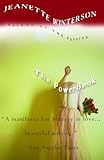 For her entry into the Hogarth series, Winterson had first pick, and chose The Winter’s Tale, which she says has always been a talismanic text for her. In The Gap of Time, Winterson has written what she calls a “cover version” of The Winter’s Tale. It’s a jazzy, news-y retelling, set insistently in a realistic world. Whereas Shakespeare takes pains to remind us that his play is just a play, Winterson’s emphatically tries to set the action in our own world. Hermione, for example, an actor and singer, has a Wikipedia page. Her acting debut was in Deborah Warner’s adaptation of Winterson’s novel The PowerBook, and she has performed at the Roundhouse Theatre in London. Leontes lives in London, where he is a successful businessman with a company called Sicilia, and Polixenes, a video game designer, lives in New Bohemia, which is recognizable as New Orleans. The characters are renamed with short, jazzy nicknames: Leontes becomes Leo; Polixenes is Zeno; Hermione is Mimi; the shepherd and clown who discover the lost Perdita become Shep and Clo. Only Perdita and Autolycus retain their full names. (Autolycus is the best translation of the book: he becomes a used car salesman trying to offload a lemon of a Delorean onto the clown.)
For her entry into the Hogarth series, Winterson had first pick, and chose The Winter’s Tale, which she says has always been a talismanic text for her. In The Gap of Time, Winterson has written what she calls a “cover version” of The Winter’s Tale. It’s a jazzy, news-y retelling, set insistently in a realistic world. Whereas Shakespeare takes pains to remind us that his play is just a play, Winterson’s emphatically tries to set the action in our own world. Hermione, for example, an actor and singer, has a Wikipedia page. Her acting debut was in Deborah Warner’s adaptation of Winterson’s novel The PowerBook, and she has performed at the Roundhouse Theatre in London. Leontes lives in London, where he is a successful businessman with a company called Sicilia, and Polixenes, a video game designer, lives in New Bohemia, which is recognizable as New Orleans. The characters are renamed with short, jazzy nicknames: Leontes becomes Leo; Polixenes is Zeno; Hermione is Mimi; the shepherd and clown who discover the lost Perdita become Shep and Clo. Only Perdita and Autolycus retain their full names. (Autolycus is the best translation of the book: he becomes a used car salesman trying to offload a lemon of a Delorean onto the clown.)
Shakespeare’s play is focused almost equally on the parent’s story and then the children’s, but Winterson’s focuses almost exclusively on the love triangle between Zeno, Leo, and Mimi. Whereas Shakespeare leaves open the possibility that Leontes may have some grounds for jealousy (though if we believe the oracle of Apollo, no room for the possibility of Hermione being guilty of adultery), Winterson is explicit that a love triangle does exist, but she inverts it. It is Leo who loves both Mimi and Zeno, Leo who has slept with both. And it’s clear that though Mimi chose Leo, there was a distinct connection between her and Zeno. Winterson even takes a hint from Shakespeare’s source in Pandosto and makes Leo consider romancing Perdita when he meets her. “As someone who was given away and is a foundling, I’ve always worked with the idea of the lost child,” Winterson has said. The part of Shakespeare’s tale that spoke to Winterson was the origin story, why the child was lost.
Shakespeare’s play, because it doesn’t insist upon existing in a realistic world, is full of wonder and mystery. It’s that magic that happens when you hear the words “Once upon a time.” The closest Winterson’s version gets to that place is in the scenes that take place inside of Zeno’s video game, when Zeno and Leo and Mimi play themselves but also become something a little grander, a little wilder, a little more numinous. But there is little of Shakespeare’s language present. Winterson’s The Winter’s Tale is as much a retelling of Pandosto as Shakespeare.
Why do we return again and again to Shakespeare’s plays, why do we keep rewriting them? Is it in hope that some of his genius will rub off? Are we searching for new possibilities for interpretation, hoping to mine new ore out of well covered ground? Or are we going toe-to-toe, trying our strength against the acknowledged genius of English literature? Perhaps it is simply that creativity is contagious. When a piece of art inspires you, it literally in-spires, breaths into you. It makes us want to create new art. Or, maybe it’s a more basic instinct. From the beginning of our lives, when we hear a good story, a story that as Winterson says becomes “talismanic” for us, what do we say? “Tell it again.”
Image Credit: Wikipedia.


